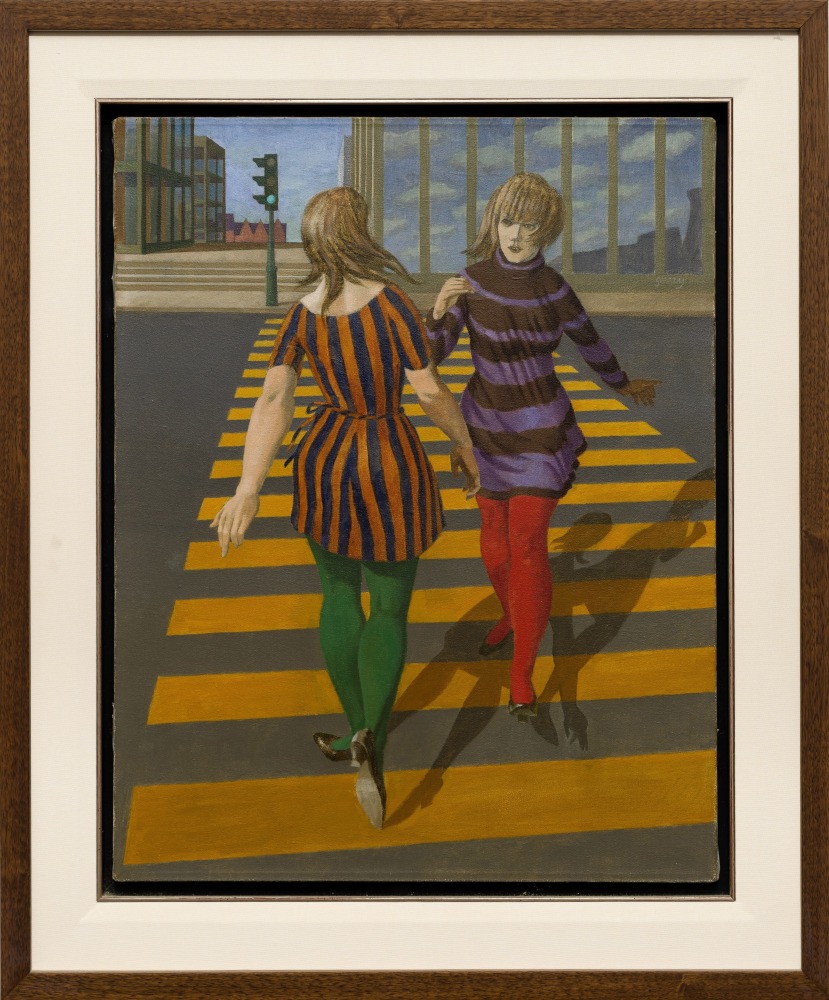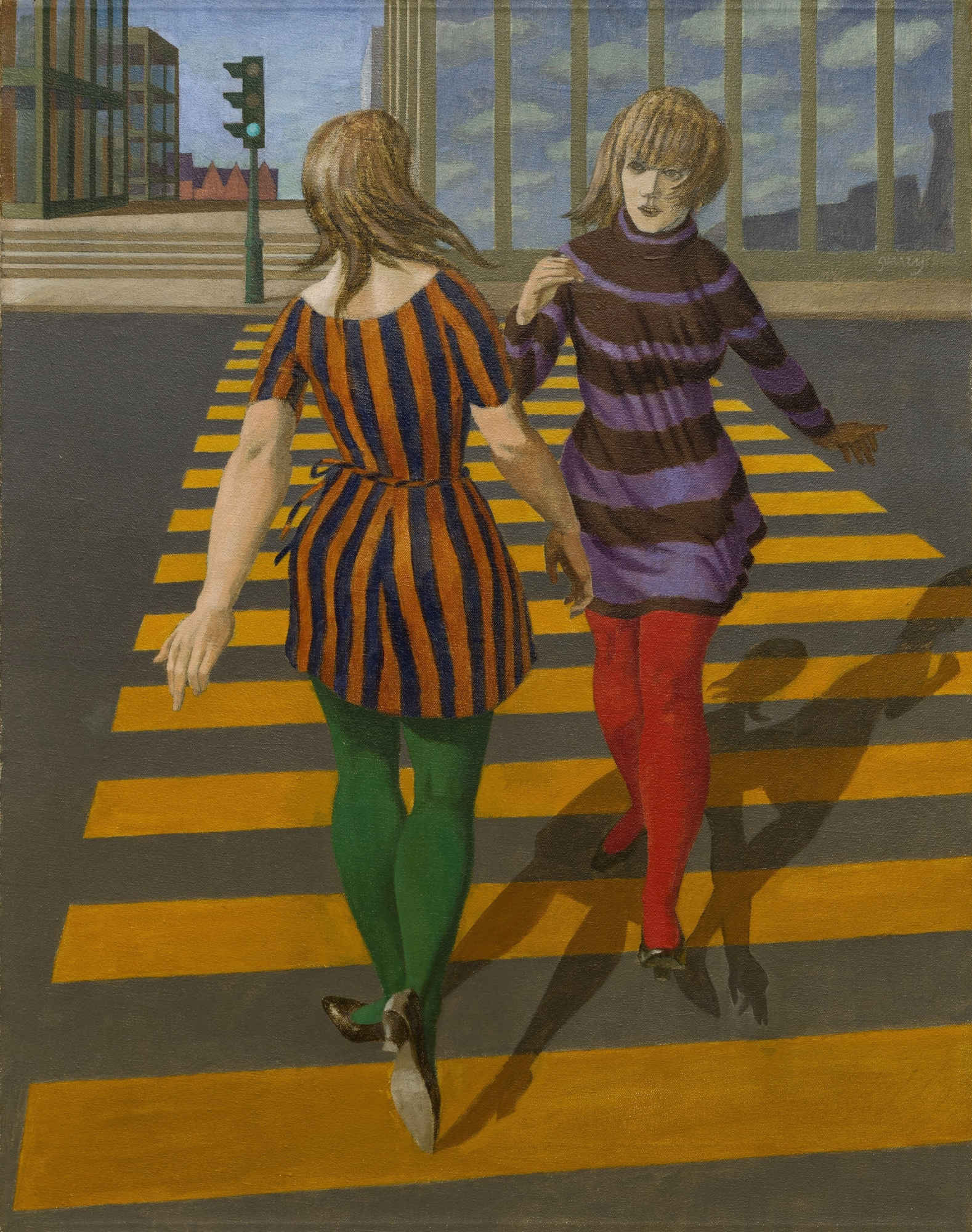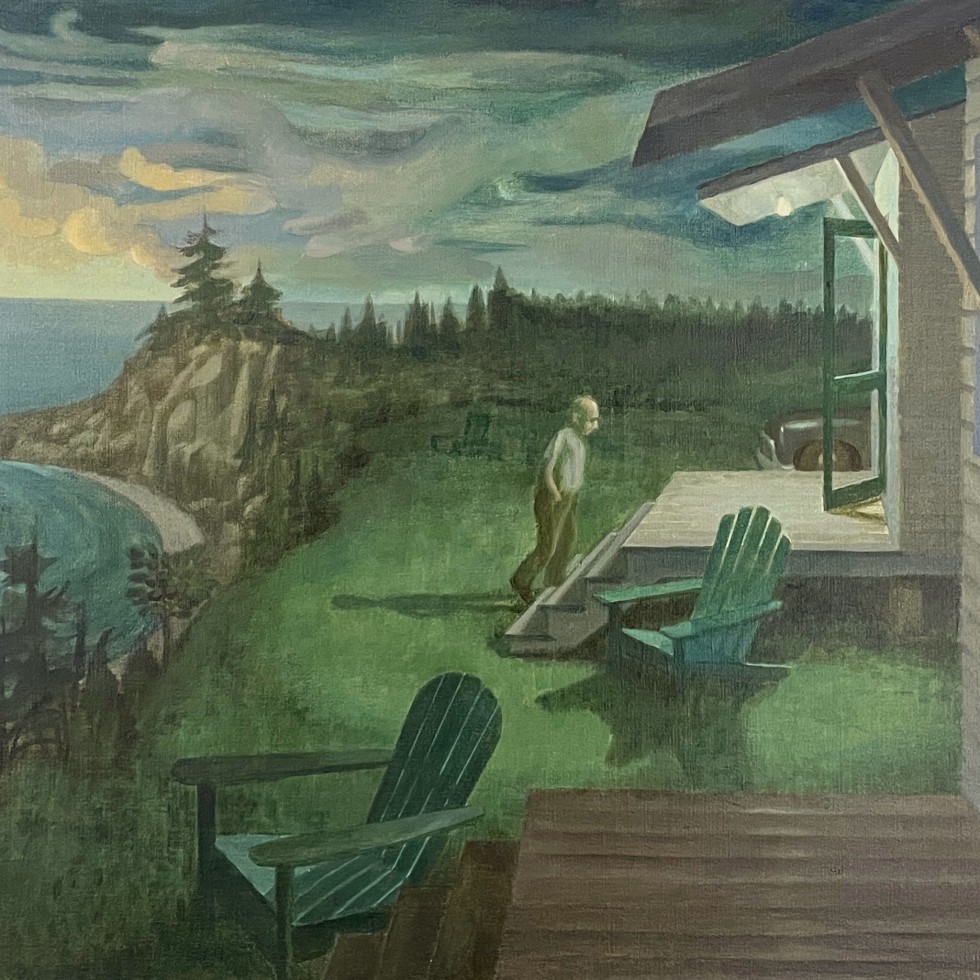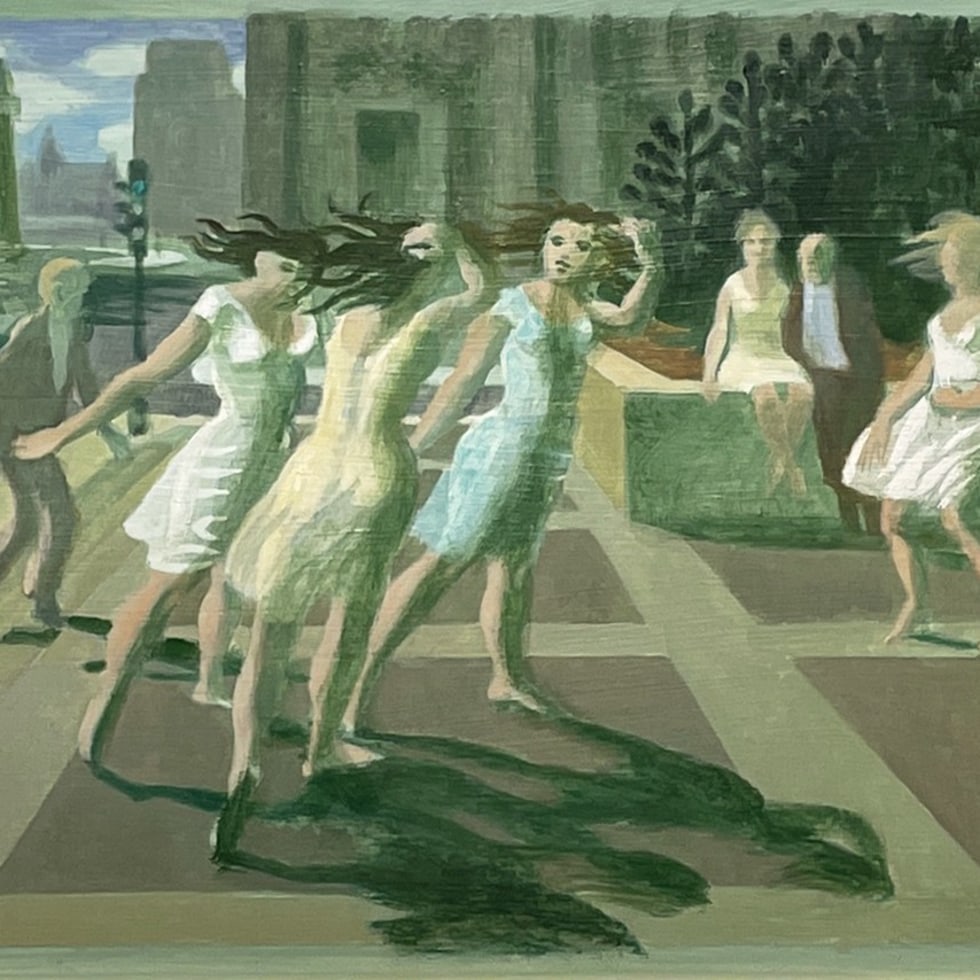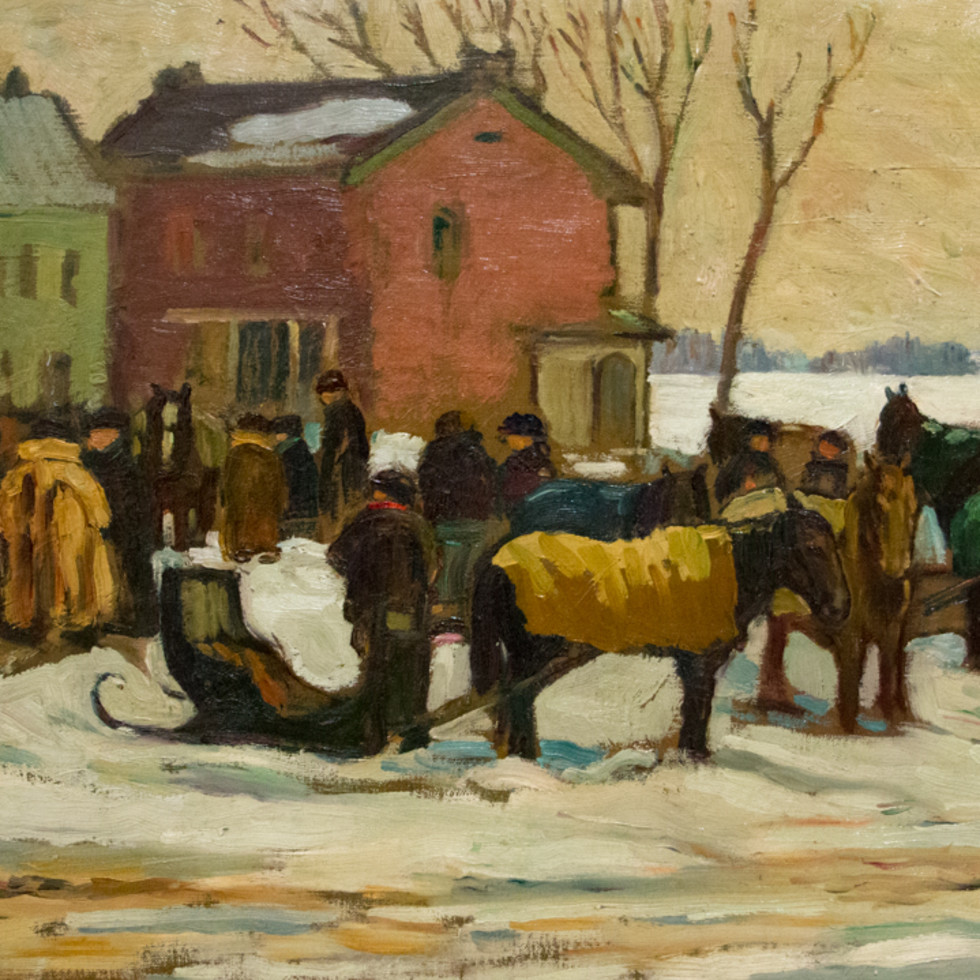Artwork for Sale
Two Girls, 1967
50.8 x 40.6 cm
Inscriptions
signed 'Surrey' (centre right).Provenance
Jerrold Morris Gallery, Toronto
Private collection, Montreal
Acquired from the above by private collection, Westmount, Quebec
With an appreciation of the mindset of Philip Surrey it would be reasonable to hypothesize that the crosswalks and intersections we regularly see in his paintings suggest zones for him and his fellow pedestrians where they should be safe from the threats posed by cars and trucks. I personally am a pedestrian, regularly walking to and from our Montreal gallery and the same at our Toronto location. I can attest that to many motorists a Stop sign represents only a suggested action. Reverting again to Daigneaults’s important interview, he wrote, “...there is one thing that occupies a special place in the artist’s imagination and which he often uses to express what he resents most: the automobile.” [1]
As with Alex Colville and Edward Hopper, the precise location of Surrey’s paintings are not of particular importance to their message. However, since we do know that Philip Surrey found content and inspiration on his regular walks, originally to and from the office and then later, post 1963, on his ritual walks around his Westmount neighbourhood, we can sometimes reasonably speculate as to what inspires the composition.
The architecture featured in Two Girls is highly reminiscent of an important complex of 3 towers completed in 1967 called Westmount Square, designed by architect Ludwig Mies van der Rohe and located a healthy 20 minute walk from Surrey’s home.
Alan Klinkhoff
______________________
Footnote:
[1] Gilles Daigneault, “The expressionism of Philip Surrey”, Texts in English, Vie des Arts, Vol 24, No. 96, Fall 1979, 101.



